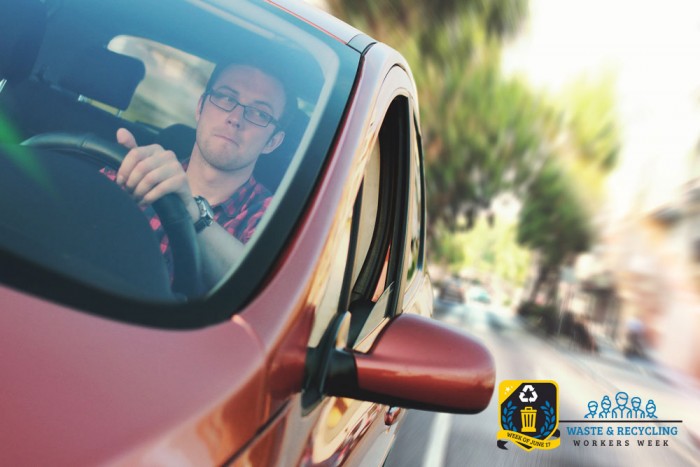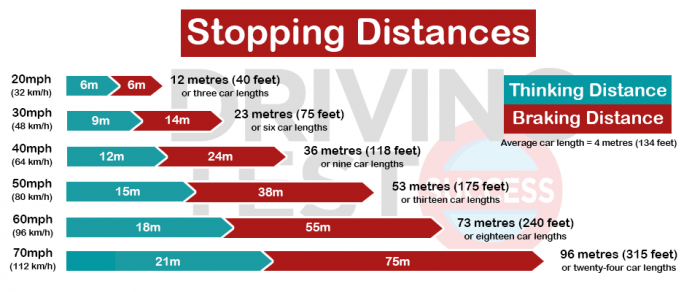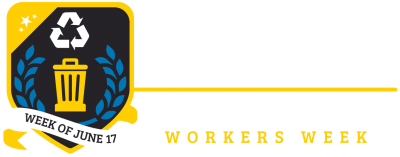
Saving a life may be easier than you think. With a few simple choices on the road, you can keep your neighbors, family and fellow commuters safe. These simple choice also make a big difference in workplace safety for our waste and recycling workers.
Slow Down
Speed plays a big roll in your ability to avoid an accident while driving. Speed can also be the difference between a minor accident with no injuries or a major accident that causes serious harm to yourself and others. But you don’t have to take our word for it. Here are some stats compiled by the the World Health Organization:
- An increase in average speed of 1 km/h (0.62 mph) typically results in a 3% higher risk of a crash involving injury, with a 4–5% increase for crashes that result in fatalities.
- For car occupants in a crash with an impact speed of 80 km/h (50 mph), the likelihood of death is 20 times what it would have been at an impact speed of 30 km/h (19 mph).
- Pedestrians have been shown to have a 90% chance of survival when struck by a car travelling at 30 km/h (19 mph) or below, but less than 50% chance of surviving an impact at 45 km/h (28 mph). Pedestrians have almost no chance of surviving an impact at 80 km/hr (50 mph).
The short version: obey speed limits and slow down in areas where pedestrians, cyclists, children or waste and recycling workers may be present.
Leave Space
Did you know that it takes nearly three times longer to stop your car at 40 mph as it does at 20 mph? At 60 mph, that distance doubles again. You can help reduce your risk of getting into an accident by leaving more space between you and the car in front of you. We like visual aids, so check out this graph from Driving Test Success:

If you are driving 40 mph and leave 148 feet (about 12 car lengths) between you and the vehicle in front of you, you are still likely to strike that vehicle at nearly 20 mph. If you hit another vehicle, that would hopefully result in a minor fender bender. But if you were to strike a pedestrian or a waste or recycling worker, a collision at that speed could cause serious injury.
Put Down the Phone
When you text, you take your eyes off the road for around 5 seconds. At 55 mph, you travel the length of a football field in those 5 seconds.
There are three primary types of distracted driving. Visual distraction is taking your eyes off the road. Manual distraction is taking your hands off the wheel. Cognitive distraction is taking your mind off driving. According to the Centers for Disease Control and Prevention (CDC), texting while driving combines all three.
There are not many clear statistics on the number of crashes caused by distracted driving, though it is frequently documented as a contributing factor. Keep the roads and our waste and recycling workers safe. Putting down the phone could save a life.
Tell Your Friends
A great way to help protect all of our waste and recycling works is to raise awareness. Help inform your neighbors, friends and family by sharing this message.
Slow down, leave plenty of room and keep your eyes on the road. These are great safety rules for all drivers in all conditions, but they are especially important in residential areas where children play and where our waste and recycling workers are often providing curbside collection services.

Slow Down to Get Around
Slow Down to Get Around (SDTGA) is SWANA’s national safety campaign. The campaign reminds motorists to drive more carefully when near waste and recycling collection vehicles. By slowing down, drivers protect themselves, the waste and recycling collection workers and other motorists.
Being struck by a motor vehicle is a leading cause of death for waste and recycling collection employees. With proper awareness, these deaths are preventable.
